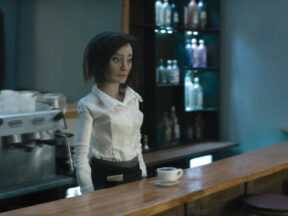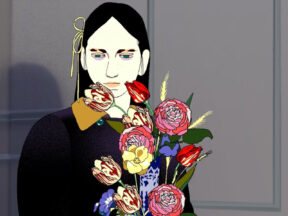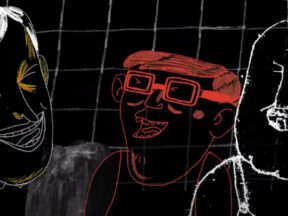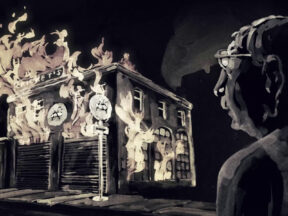
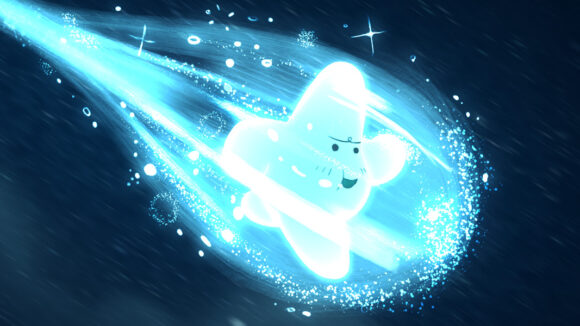
2024 Oscars Short Film Contenders: ‘Starling’ Director Mitra Shahidi
Welcome to Cartoon Brew’s series of spotlights focusing on the animated shorts that have qualified for the 2024 Oscars. There are several ways a film can earn eligibility. With these profiles, we’ll be focusing on films that have done so by winning an Oscar-qualifying award at an Oscar-qualifying festival.
Today’s film is Starling from director Mitra Shahidi (story artist on Pixar’s Luca and the upcoming Elio). The short earned its Oscars qualification by winning the best animated short award at the Tribeca Film Festival.
Starling’s touching story about love and loss is told entirely without dialogue. Instead, charming animation tells the story of a mischievous star who comes down from the sky to celebrate her birthday with her family one last time. After being blown off course, she must maneuver through a gorgeously drawn version of Istanbul to find her home before time runs out.
The film was was produced through Pixar’s co-op program which allows employees to leverage equipment available at the studio to further their own creative pursuits in their free time. Trevor Jimenez’s Oscar-nominated Weekends was also produced through the same program.
Cartoon Brew: You work for one of the top animation studios on the planet but still found the time and energy to make Starling. How important was it to have your own thing going on the side, and what were the main challenges in balancing your studio work and directing your own indie short?
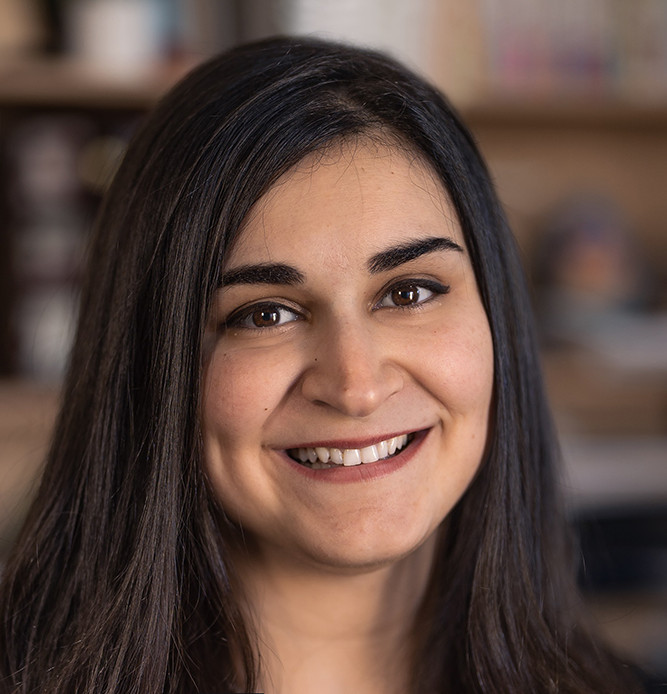
Mitra Shahidi: It was quite difficult as I was simultaneously trying to learn the ropes and perform at Pixar the best I could, so I had to work on this movie in the evenings, on weekends, and on holidays. It required a lot of sacrifice of time, other activities, and rest. The main challenges were the lack of budget, putting together a team without an actual studio, and doing everything with no dedicated time. What was extremely fortunate was that the film’s leadership team at Pixar was absolutely dedicated and brilliant, making the actual production easier for me. Shoutout to our incredible producer, Jessica Heidt! Everyone worked so passionately and helped push it to the finish line. I didn’t exactly set out to make something on the side; it was just a life event that triggered me to process my feelings artistically. Having a side project is super important to any artist who works in a studio environment to keep sharp in their skills and help define their artistic voice.
What was it about this story or concept that connected with you and compelled you to direct the film?
When I lost my dear childhood friend, I couldn’t do anything but do a zillion drawings of a little star. She loved people in her life intensely and was full of energy, a true shining personality. I still feel her presence and influence every day. We grew up in Istanbul, and throughout the writing of this film, our personalities meshed into one and created the Starling character, who stops at nothing to get home to her loved ones. I couldn’t not make this short film as I was meditating on grief, impermanence, and love. I feel honored to dedicate this film to her and everyone we loved and lost.
What did you learn through the experience of making this film, either production-wise, filmmaking-wise, creatively, or about the subject matter?
Creatively, I learned to trust my gut when it comes to storytelling. I gathered a lot of very valuable opinions and notes from experts during the reels process; some differed wildly from each other. All these notes helped me decide what movie I needed to be making by either taking or not taking them. I had to truly make a decision and stick with it, which required a lot of artistic and leadership courage. Then, communicating this decision to the rest of the team while balancing their vision, trusting that everyone on the team is here to support the movie, and truly considering every idea was another big learning step. I was blessed with the best, most talented team a director could ask for. And about the subject matter, I learned that I need to lean into my tendency to explore subjects that are really difficult to talk about. If there are no words, maybe there can be pictures, and that’s what I’m here to help create.
Can you describe how you developed your visual approach to the film? Why did you settle on this style/technique?
Our production designer, Celine You, had a vision for this movie to feel hand-crafted. We went to great lengths to make sure every frame of this film “felt” like our character, Starling: bubbly, expressive, and playful. The colors and designs were carefully chosen to match our memories of 1990s Istanbul, with all the tastes and smells that come with it. We kept the animation style charmingly simple to match the designs and atmosphere. The artists from Turkey brought their own memories and experiences of the city, which added a lot of authenticity. Since the subject matter is so sad, we chose to make the look very appealing to help deliver our message of undying love and permanence.

.png)
